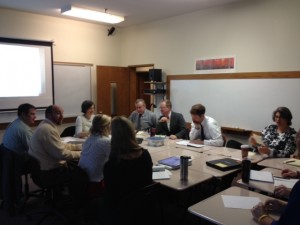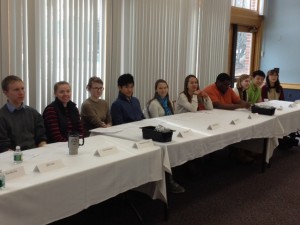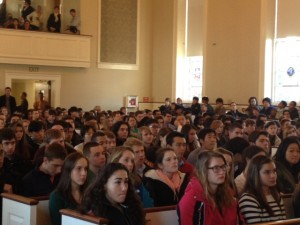I was reflecting upon the rounds that I enjoy making at Williston and two moments coalesced and inspired this post. The first was an English department meeting which only a former English teacher could love. During the period, our department had a deep discussion on the use of the semi-colon. (Actually, much more was happening, too, as those in the group challenged one another’s ideas about teaching writing and how students analyze different texts.) “What a great moment,” I thought. It showed that our adopted schedule has given Williston’s professionals time to do what they do best.
Being peripatetic, I encountered another such moment—but this one the result of considerable labor, time, and planning. The Modern Language department’s curricular review team (the final visit of outside experts in a year-long process) created a report about how we teach languages at Williston. Everything from the use of technology to “backward design” has been discussed, challenged, and tested.
I’m not sure how many of our students know the extent to which our teachers are committed to life-long learning, but Williston’s teachers model the message—the same message they deliver every day in classrooms across campus. Their continuous professional development demonstrates that good teaching is no accident.




 We all need to be learners in the virtual classroom. Dr. Sameer Hinduja educated Williston students on Tuesday (and a gathering of parents the evening before) about the clear and present dangers of teenage use of social media.
We all need to be learners in the virtual classroom. Dr. Sameer Hinduja educated Williston students on Tuesday (and a gathering of parents the evening before) about the clear and present dangers of teenage use of social media.  I have been thinking a lot in recent years about innovative teaching ideas and am always on the lookout for them.
I have been thinking a lot in recent years about innovative teaching ideas and am always on the lookout for them.